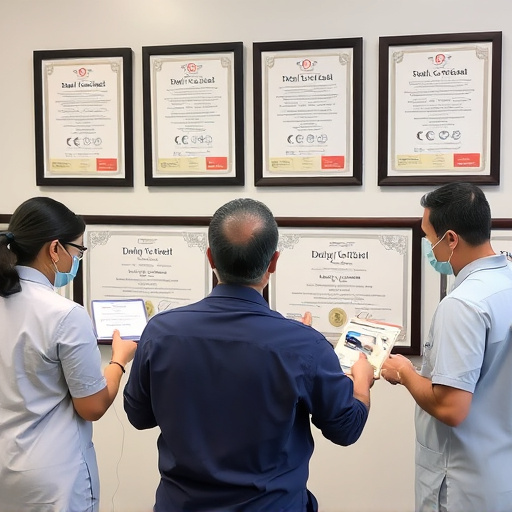Modifying vehicles with Legal Cold Air Intake (CAI) systems offers enhanced engine performance but must adhere to strict environmental regulations controlling carbon monoxide, nitrogen oxides, and particulate matter emissions. These systems provide direct, oxygen-rich outside air to the engine for improved torque and horsepower, while advanced filtration technologies prevent negative impacts on tailpipe emissions. Innovation in legal CAI systems balances powerful engines with environmental responsibility, ensuring drivers enjoy improved performance without regulatory issues. Proper selection and installation are crucial to maintain factory emission controls and avoid penalties related to illegal modifications.
“Legal Cold Air Intake (CAI) systems are a popular modification among automotive enthusiasts, but understanding their legality and environmental impact is crucial before making an upgrade. This article guides you through the intricate world of street-legal CAI systems, focusing on key considerations like compliance with emission standards and performance benefits. We’ll explore the legal requirements, analyze the effects on emissions, and provide insights into why transitioning to legal CAI systems can enhance both your vehicle’s performance and environmental footprint.”
- Understanding Legal Requirements for Cold Air Intake Systems
- The Impact of Emissions: A Closer Look at Street Legal Intakes
- Benefits and Considerations for Upgrading to Legal Cold Air Intake Systems
Understanding Legal Requirements for Cold Air Intake Systems

In many regions, modifying a vehicle’s engine performance involves navigating a web of legal requirements, particularly when it comes to cold air intake (CAI) systems. These modifications can significantly impact both power and fuel efficiency, but they must adhere to strict environmental regulations designed to control emissions. Understanding these legal mandates is crucial before installing a CAI system. Non-compliance can lead to penalties and legal issues for vehicle owners.
Emissions standards vary by country and state, with many focusing on reducing harmful gases like carbon monoxide, nitrogen oxides, and particulate matter. Cold air intake systems, by directing colder, denser air into the engine, can enhance combustion efficiency, but they must not compromise these emission controls. Legal cold air intake systems are designed to meet these standards while offering performance benefits, ensuring that modifications remain within the legal framework.
The Impact of Emissions: A Closer Look at Street Legal Intakes

The impact of emissions is a critical consideration when discussing street legal intake systems, particularly as the automotive industry faces increasing pressure to reduce its carbon footprint. Legal cold air intake (CAI) systems are designed to enhance engine performance while optimizing airflow, but they must also adhere to stringent emission standards. These systems typically route cold, dense air directly from outside the vehicle into the engine, bypassing the cabin air filter and ensuring a consistent supply of oxygen-rich air. While this can lead to improved torque and horsepower, it’s essential to maintain the delicate balance between enhanced performance and environmental compliance.
Emission regulations play a pivotal role in shaping the development and adoption of legal CAI systems. Manufacturers must implement advanced filtration technologies and precise engineering to ensure that modifying air intake does not negatively impact tailpipe emissions. The challenge lies in accommodating the demands of modern vehicles, which require both powerful engines and reduced environmental impact. As such, ongoing innovation in street legal intake systems focuses on achieving optimal performance while adhering to emission standards, ensuring a harmonious relationship between driver satisfaction and ecological responsibility.
Benefits and Considerations for Upgrading to Legal Cold Air Intake Systems

Upgrading to legal cold air intake (CAI) systems offers a plethora of benefits for vehicle owners, especially those passionate about performance and emissions compliance. CAI systems are designed to draw in cooler, denser air from outside the engine compartment, enhancing combustion efficiency. This simple modification can lead to significant improvements in power output, torque, and overall engine responsiveness, making it a popular choice among car enthusiasts.
When considering an upgrade to legal cold air intake systems, it’s crucial to balance performance gains with environmental impact. While CAI systems generally reduce emissions by optimizing air-fuel mixture delivery, they can also draw more power from the vehicle’s electrical system. Therefore, ensuring that your vehicle’s charging system is capable of handling the additional load is essential. Moreover, selecting a legal CAI system that maintains factory emission controls and passes all necessary regulations is paramount to avoid any legal complications related to emissions standards.
Upgrading to a street legal cold air intake system offers a range of benefits, from enhanced engine performance to reduced noise levels. However, it’s crucial to understand and comply with local emissions regulations. By carefully considering the environmental impact and choosing a high-quality legal intake system, car owners can enjoy improved vehicle dynamics without compromising on legal compliance or contributing to harmful emissions.














